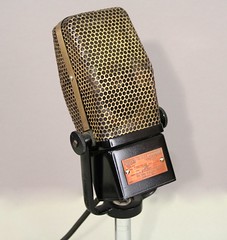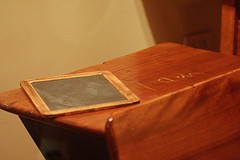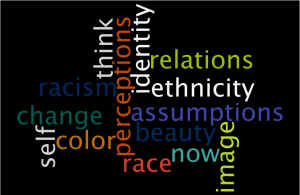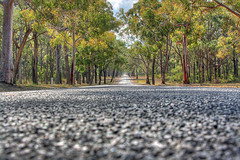Photo by Jschneid

I enjoyed surfing all the different listings of podcasts available. I explored a podcast that teaches you Spanish, a Mugglecast for Harry Potter fans, “Cranbrook Composers’ Podcast“, where students chat about songs they created and then the audience samples the song, and an instructional/professional development podcast called “Kidcast: Learning and Teaching with Podcasting“. I found a wide variety of styles and sound mixing on each of these podcast series. I giggled at the Spanish, as the epidode I listened to talked about the term “hot”. They taught sweating, armit, and other funny words. I can see sharing this podcast listing with the Spanish teacher in my school, as she currently has her own Spanish podcast series that I helped her create. I think she could borrow some formatting ideas from this show. The Cranbrook composers is a lot of fun, as students MC the podcast and show off music they create. Kidcast was a bit of a snoozer, and maybe because it is done in such an elementary style with very few bells and whistles. I can see this series as a good learning tool for teachers new to podcasting. Finally, the Mugglecast, which is a 2006 People’s Choice award winner, is a lot of fun if you have some extra time to listen to people chat about the latest Harry Potter news, films, books, and rumors. (I personally love it!)
I found podcast alley, the education podcast network, and learn out loud very user friendly and informative in finding wonderful sound feeds. I was not aware of these sites, so I am thrilled to add them to my arsenal of resources for teaching, students, and professional development. I was blown away by the 100 Free Podcasts From the Best Colleges in the World. I sampled a bit of the Modern Poetry seminar from Yale University. What a phenomenal resource and an opportunity to continue with life-long learnig. Heck, I want to share this listing with my dad, as he is always looking to learn something new!
I enjoyed catching podcasts in my reader, as I really do not want all those editions loaded on my hard drive. This was new information for me, and I am thrilled to find that I can check out podcasts in this way. I already subscribe to Grammar Girl through my itunes.
I am a listener of Grammar Girl and I introduced her episodes on run-ons, fragments, and comma splices to my students this year as we were studying compound sentence construction. The students enjoyed the different learning format, and we later used her podcast as an example for format, including the opening sound reel and the closing bumper. I did have to screen which episodes to use, as some of her chatting about language structure is way too advanced for my 7th graders.
I used a podcast from NPR’s “All Things Considered” for a thank you note writing activity, related to a short story the students read. We listened to Peggy Post, the granddaughter of Miss Manners herself, Elizabeth Post. We learned about thank you note etiquette in a wired world. Listen to “In a Wired World, Handwritten ‘Thank You’ Still Tops“. Listening to this podcast in class was certainly more engaging than asking students to take notes from an article or listen to my thoughts as the teacher. Not only that, because an expert on manners explained the proper etiquette, the information was more authentic and valuable to the students. From listening to this podcast, students also learned about the format of a professional podcast for their own future production.
My students created their own podcasts for a book project. Students read the same book selections in pairs or small groups, all the while keeping an electronic interactive notebook. The writings in the notebooks later served as the basis for the scripts they composed, after listening to several student-created and professionally-created podcasts to get ideas for format, structure, editing, and sound effects. After the scripts were reviewed by me and other students, the revised scripts were taken into the “studio” for production. I introduced the program Garageband to my students, which is a MAC application. Many of the students already were familiar with the program, so I put them in charge of helping the newbies. Students used sound effects, a show opening, a “style” for their show, and a closing bumper. Some students were even so creative as to put in their own commercials. One group even did this in Hebrew, as their book was a story taking place in Israel. Check out their podcasts on the Jewish Book Podcast site. (Oh, and from this week’s learning, I realized that these sound clips really aren’t podcasts, as they are not available through RSS! 🙂 ) Just beware of the students’ affinity for sound effect overload, which we discussed at length. They tend to want to put in too many sound effects and go a bit crazy with the voice pitch alteration. We discussed that the sound effects should enhance and not take away from the podcast. Even after this elaborate discussion, a few groups used voiceover effects that were difficult to hear. This “no no” in production reminds me of the students overuse of effects in Powerpoint. For evaluation purposes, I used a simple podcast rubric, which was an adaptation from several online tools that I gathered, as well as a basic speech and oral communication scoring tool that I have used with my students in the past. There are oodles of rubrics on the web, so it is easy to find one to adapt.
Podcasting is a great tool for kids showing what they have learned, collaborating, and even learning enrichment information. I hope to use more podcasting in the future. If you can imagine it or dream it up, there is a meaningful way to apply it!









